
Although they haven’t been on the market for long (by gardening standards), Cherokee Purple tomatoes are one of the most widely grown heirloom varieties in the US.
As one of the first purple tomatoes sold commercially, they are known for their color, size, and wonderful flavor. They are also one of the easier heirlooms to grow, making them ideal for beginners or experienced tomato growers.
Fast Facts
- Type: Indeterminate
- Fruit: Beefsteak
- Size: 5+ feet
- Days To Harvest: 80
Cherokee Purple Origins & History
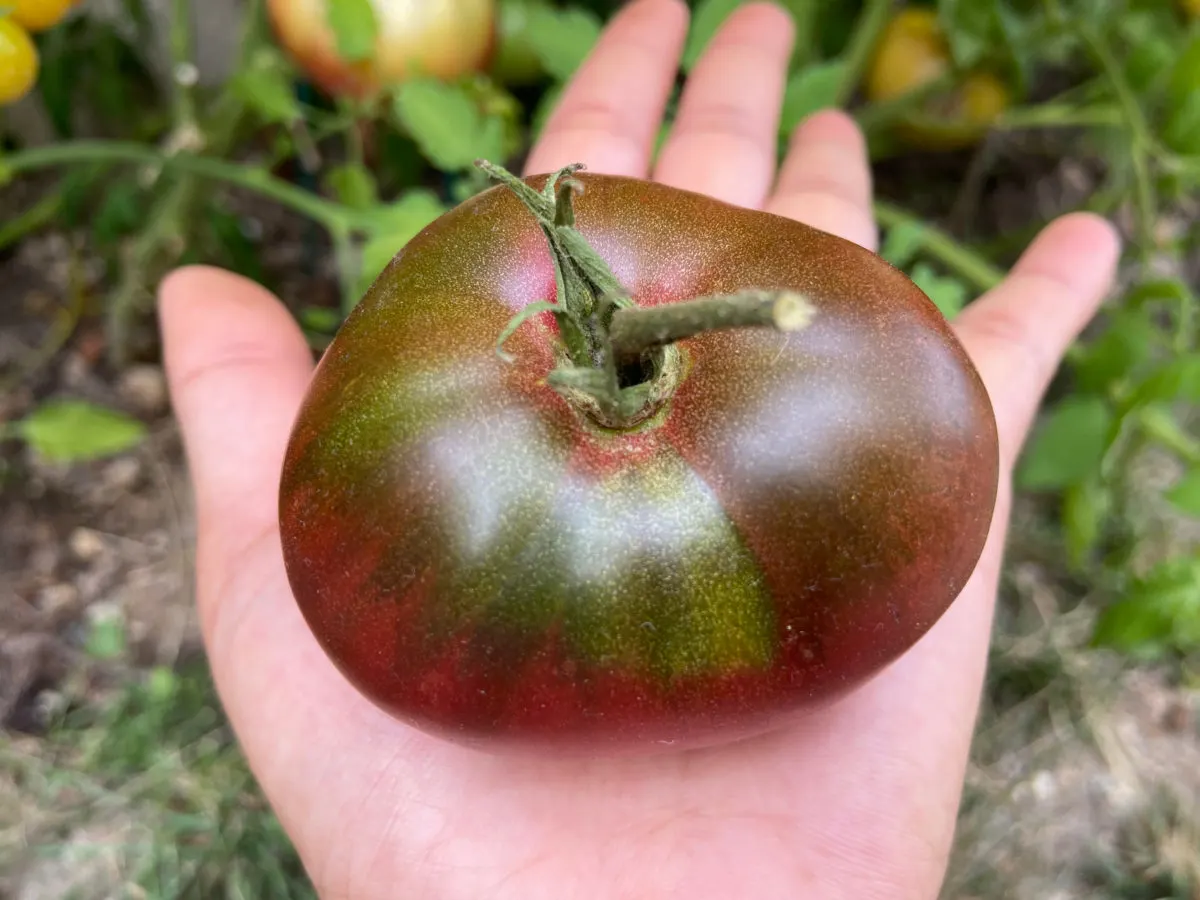
Their widespread popularity may make people assume this heirloom tomato has been on the market for a while. But the rise of this variety is relatively recent compared to other tomato types. In fact, the first Cherokee Purple seeds were only first commercially sold in the US in 1993, and with a limited supply.
Since then, interest in these interesting tomatoes has skyrocketed.
The name Cherokee Purple comes from the suspected origins of the seeds. In the early 1990s, tomato expert and heirloom aficionado Craig LeHoullier received seeds from John Green from Tennessee. Green claimed the seeds were passed on from neighbor to neighbor, originally believed to come from Cherokees 100 years before, and that they were worth growing.
Despite their somewhat unappealing look, with a color he described as a “bad leg bruise”, LeHoullier loved the tomatoes and named them Cherokee Purple. He sent the seeds to a few growers, including Southern Exposure Seed Exchange, which was the first to release them to the market in 1993. Founder of Johnny’s Selected Seeds Ron Johnston also received a few seeds and began selling them, surprised at their commercial success from an amateur seed saver.
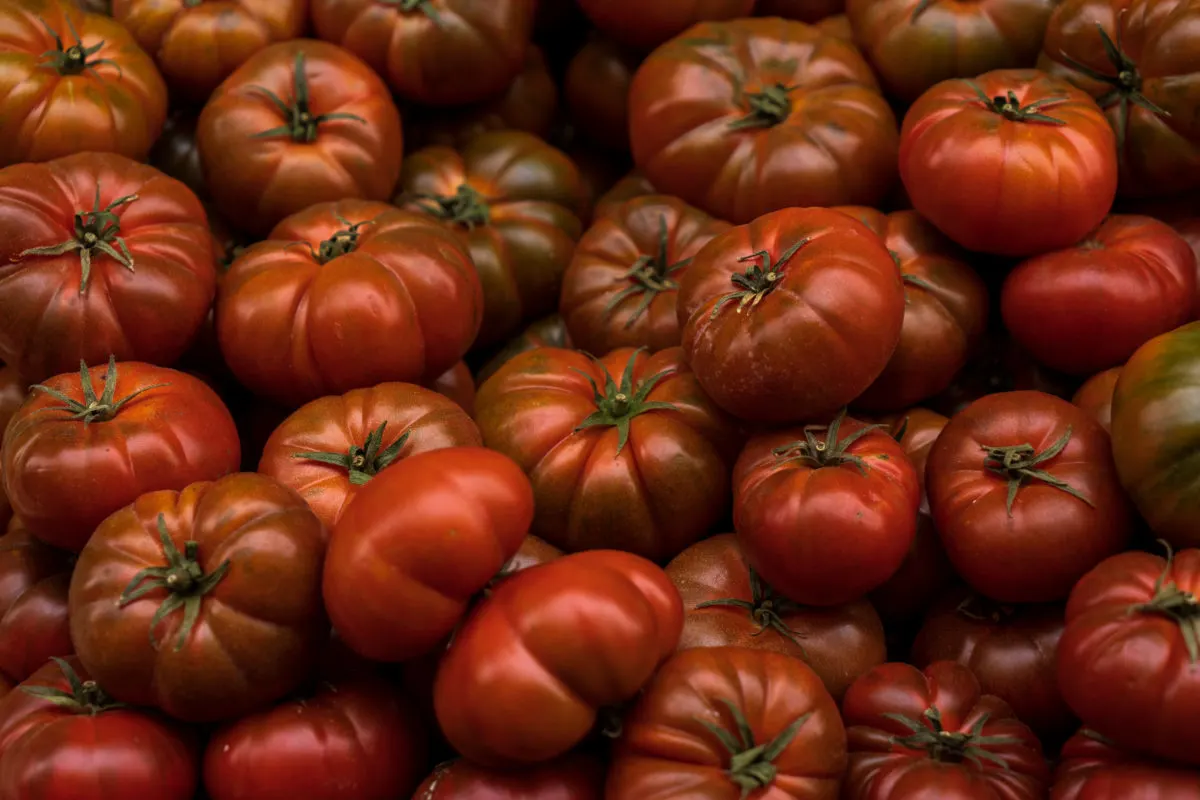
As one of the first tomatoes with a darker hue, known now as purple or black tomatoes, Cherokee Purple became an instant hit. Today it is one of the most popular heirlooms on the market, grown for its smoky color and wonderful flavor.
Flavor Profile
Along with color, Cherokee Purple tomatoes are appreciated for their well-balanced flavor. They have a slight sweetness that is present but not overpowering, allowing the tomato taste to really shine through. They also have a great moisture content characteristic of other beefsteak tomatoes, ideal for snacking on fresh.
One standout characteristic of this tomato that perfectly matches its color is the smoky notes – again, not overpowering, but just enough to make the fruits taste slightly different from other tomatoes you may find in grocery stores.
Best Uses For Cherokee Purple Tomatoes
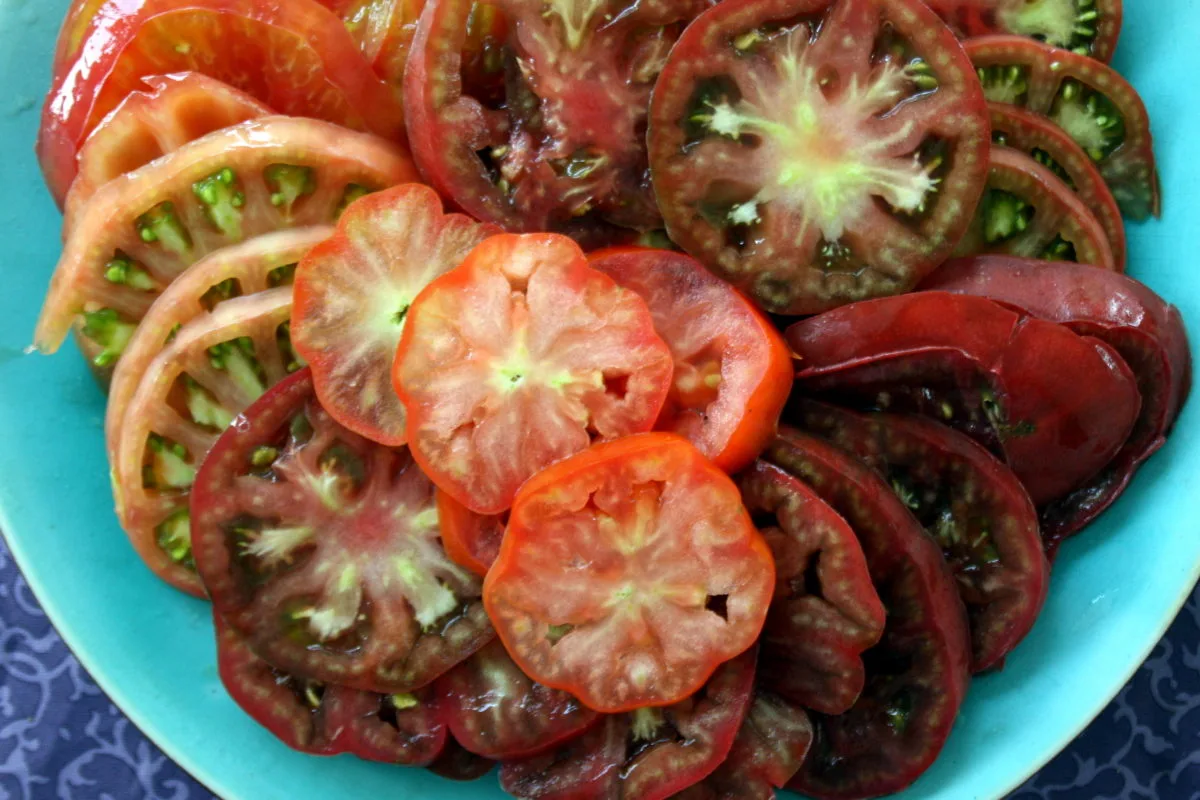
The interesting flavors of Cherokee Purple tomatoes are best enjoyed when eaten fresh. This also matches up with their high moisture content which works wonders in sandwiches or salads, but can water down sauces or soups when cooked.
Because their flavor is balanced and not overpowering, these tomatoes are well-suited to almost any sandwich, but are particularly tasty in a classic BLT. The fruits can also be diced and added to fresh salads for a smoky, summery punch that beats any store-bought tomato by miles.
What Are Cherokee Purple Tomatoes Best Known For?
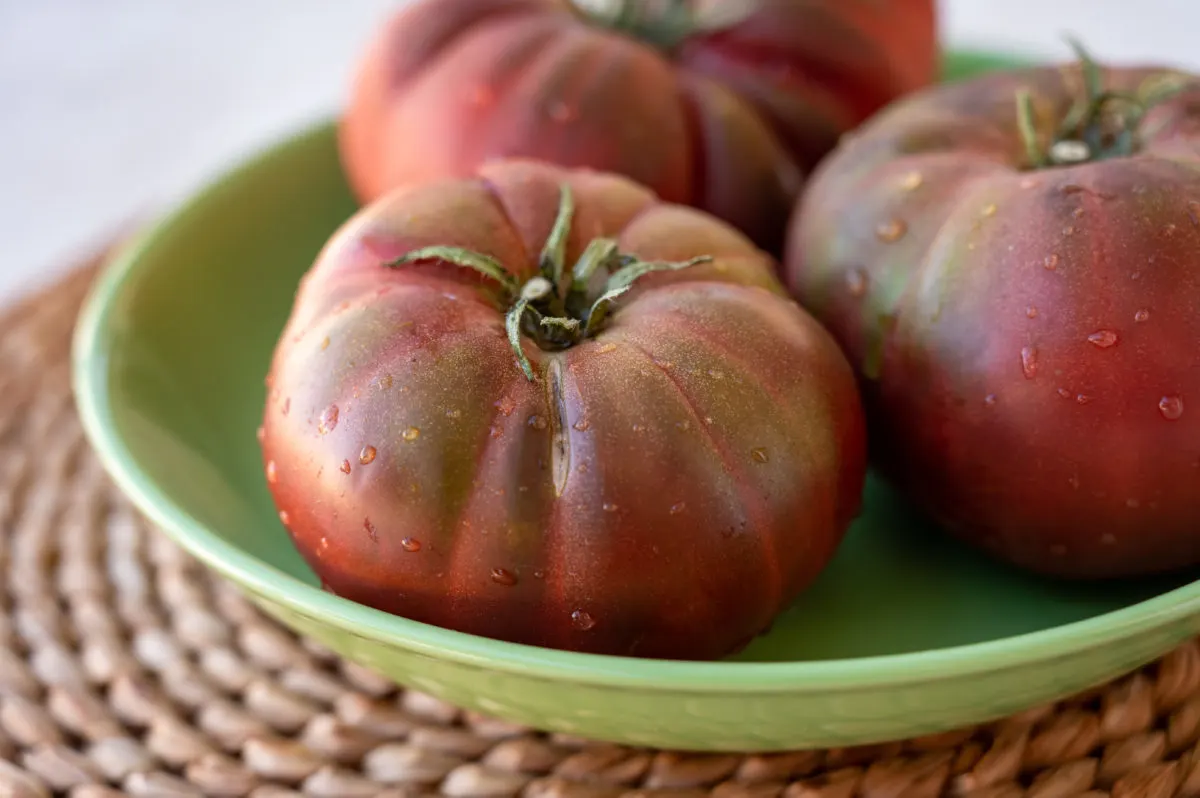
One of the main reasons people grow Cherokee Purple tomatoes is for their color. Although there are now more dark purple or almost black tomato varieties on the market, Cherokee Purple was one of the first and remains the most famous. The fruits look great in the garden and instantly catch the eye, but are even more effective in the kitchen where their mottled hues are bound to turn heads.
As an added bonus for gardeners, Cherokee Purple tomatoes are also known for their resistance to several common tomato problems. One of those issues is cracking, a common concern among heirloom growers. They are also considered relatively resistant to some of the most common and damaging tomato diseases, including Septoria leaf spot.
Where To Buy Cherokee Purple Tomato Seeds
Cherokee Purple seeds are easy to find online or in your local nursery as they are one of the most widely sold heirlooms on the market. If you prefer to shop online, you can purchase from these suppliers:
How To Grow Cherokee Purple Tomatoes
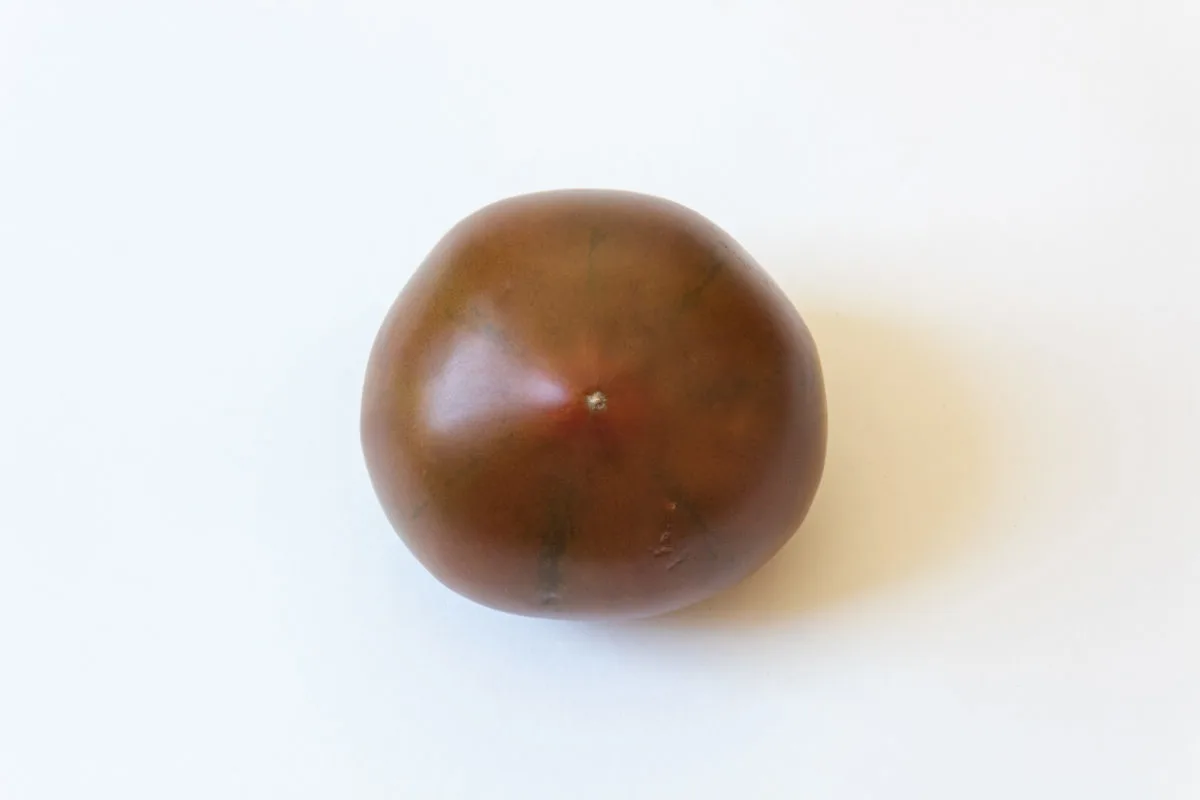
Once you’ve received your seeds, you can start sowing indoors around 6 weeks before the last frost date in your region. This ensures the seedlings will be ready as soon as temperatures increase and the ground warms.
Although they are not massive plants, Cherokee Purple is an indeterminate variety and needs support when planting. This is especially important during harvesting time when the heavy fruits can snap stems that aren’t well-supported.
While they can be planted in containers (if you have one large enough), this plant performs best out in the garden where the roots have enough space to expand. This will provide enough support for fruit development when that time comes.
Cherokee Purple may be more resistant to cracking than other tomato types, but they still benefit from a consistent water supply for the juiciest fruits possible. Drip irrigation is recommended as this also keeps moisture off the leaves, but you can simply water the soil every few days or more often in warm weather.
At the end of the season, don’t forget to leave a few fruits to save seeds from. These can be planted again next spring to continue your Cherokee Purple supply year after year.
